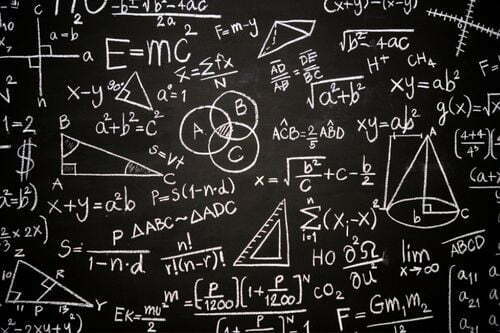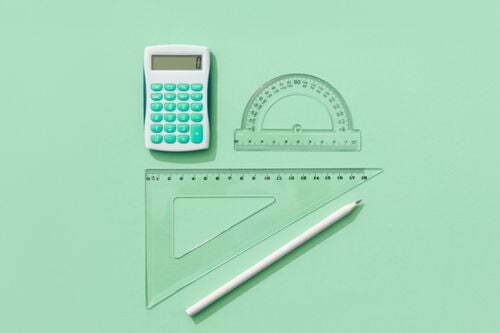Table of Contents
While stepping into a full bath, Archimedes discovered the principle of displacement. He realized that the volume of the water that ran over surpassed his submerged body. Thanks to Archimedes, we can derive answers to questions in physics. Have you ever pondered the difference between distance and displacement? Read this blog for details.
What is distance?

You can define distance as an object’s total movement regardless of direction. You can describe this distance as how much ground an object can cover, irrespective of its starting or ending point.
If a cycle travels north for 15 km and turns east for 5 km, it covers a total distance of 20 km, demonstrating that it does not matter which direction the journey occurs. There is no such thing as zero or negative distance. It is always higher than the displacement of the body. When you consider the distance of a particular body, you can get a general idea of which path it takes.
As said before, distance is the total movement of a particular body in any direction. The formula for expressing distance is as follows.
∆d=d1+d2
Here,
- ∆d is the total distance traveled by the object.
- d1 represents an object’s motion towards the first point.
- d2 is the movement of an object from the first point to the second point.
What is displacement?
You can define displacement as a change in an object’s position. It has both a magnitude and a direction as a vector quantity. Represent it by an arrow pointing from the starting to the ending point.
Take the same example from the previous paragraph. As a result, the overall displacement of that particular body is essentially the length of the line connecting both positions.
The displacement of the body is either less than or equal to the distance traveled by the body, but it can never be greater. Displacement, unlike distance, does not provide a fair idea or information about the path of the object traveling.
Displacement is simply the change in position that an object experiences while in motion. Both magnitude and direction are taken into consideration. The displacement formula is as follows.
∆x=xf-x0
Here,
- xf denotes the object’s final position.
- x0 is the object’s starting position
- ∆x is the object’s displacement
Difference between distance and displacement
| Specification | Distance | Displacement |
| Definition | It is the complete path an object travels. | It is the shortest distance between the final and initial position of the object’s motion. |
| Magnitude | It is always positive. | It can be positive, negative, or zero, depending on the factors. |
| Quantity | It is a scalar quantity. | It is a vector quantity. |
| Increase/decrease | Distance does not decrease with time | Distance can increase or decrease with time. |
| Greater/lesser | It never falls below the displacement value. | It is either equal to or less than the value of distance. |
| Symbol | ‘d’ represents distance. | ‘s’ represents displacement. |
| Type of information | It provides information about the object’s path in detail. | It does not provide information about the object’s path. |
| Expression | It is usually expressed as a number and magnitude unit in meters. | In physics, its representation can be by a module (value), unity, direction, and meaning. |
Example of distance and displacement
- Ben travels 250 miles to North but then back-tracks to South for 105 miles to pick up a colleague. What is Ben’s total displacement?
Ben’s starting position Xi= 0
His final position Xf is the distance traveled North minus the distance South.
Calculating displacement (D)
D = ΔX = (Xf – Xi)
D = (250 mi N – 105 mi S) – 0
D = 145 mi N
- Here’s a good example of distance and displacement because displacement is a vector quantity representing the object’s overall change in position. Assume an object moves 4 meters east, 2 meters south, 4 meters west, and 2 meters north.
The total distance traveled by the object is 12 meters, (distance=12) the displacement in the object’s motion. As a result, (displacement=0) because displacement must pay attention to direction.
Because it is a vector quantity, the 4 meters east cancels out the 4 meters west, and the 2 meters south cancels the 2 meters to the north.
Similarities between distance and displacement

Although they have many differences, they also have a few similarities. The following are the most common similarities.
- Both distance and displacement have the same SI unit, the meter (m).
- Both require a reference point from which they can measure.
- They are equal if the body moves in a straight line and would be even better if they move only in one direction.
- The dimensions of both are the same.
Key takeaways
- Distance and displacement are two physical quantities that we experience daily.
- Specific factors differentiate distance and displacement, such as quantity, symbol, magnitude, and more.
- You can also see some similarities between distance and displacement, such as the SI unit, dimensions, reference point, etc.
We hope this blog was informative. If so, please share your views in the comments below. Click here to contact us for more information on the difference between distance and displacement. We would be delighted to assist you with your queries.
Liked this blog? Read Next: Concepts of physics that everyone should know of!
FAQs
Q1. Are speed and velocity the same?
Answer- Speed is the rate at which an object moves along a path in time, whereas velocity is the rate and direction of movement. In other words, velocity is a vector, whereas speed is a scalar value.
Q2. What is Newton’s third law of motion?
Answer- Newton’s third law states that every action has an equal and opposite reaction. So, if object A exerts a force on object B, object B will exert an opposite but equal force on object A.
Q3. Is velocity vector or scalar quantity?
Answer- Velocity is a vector quantity. Velocity is the speed of an object in a particular direction.






